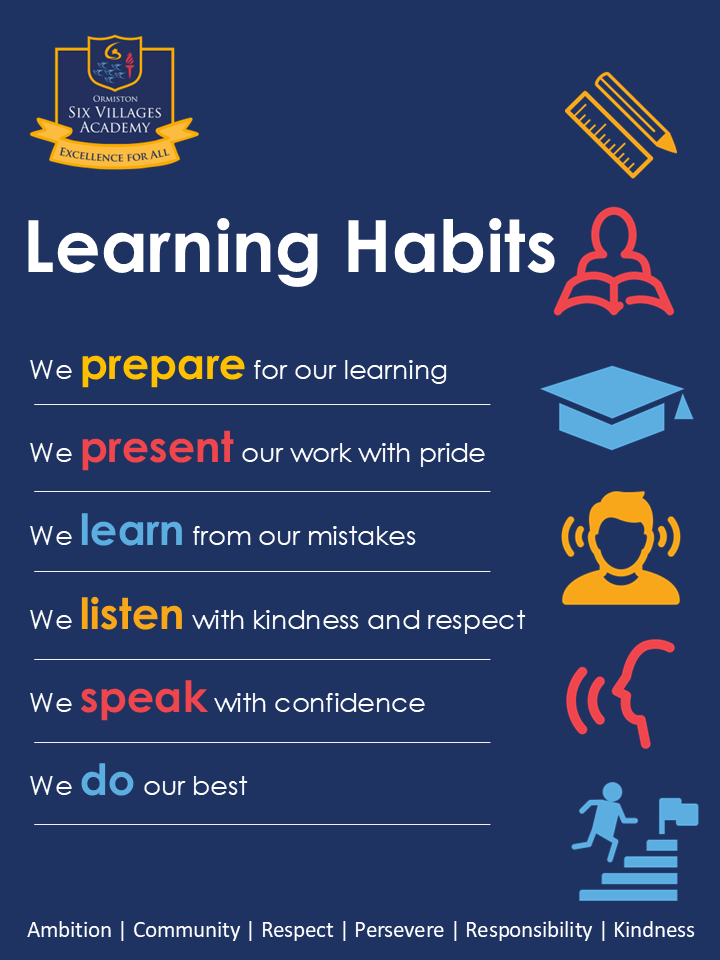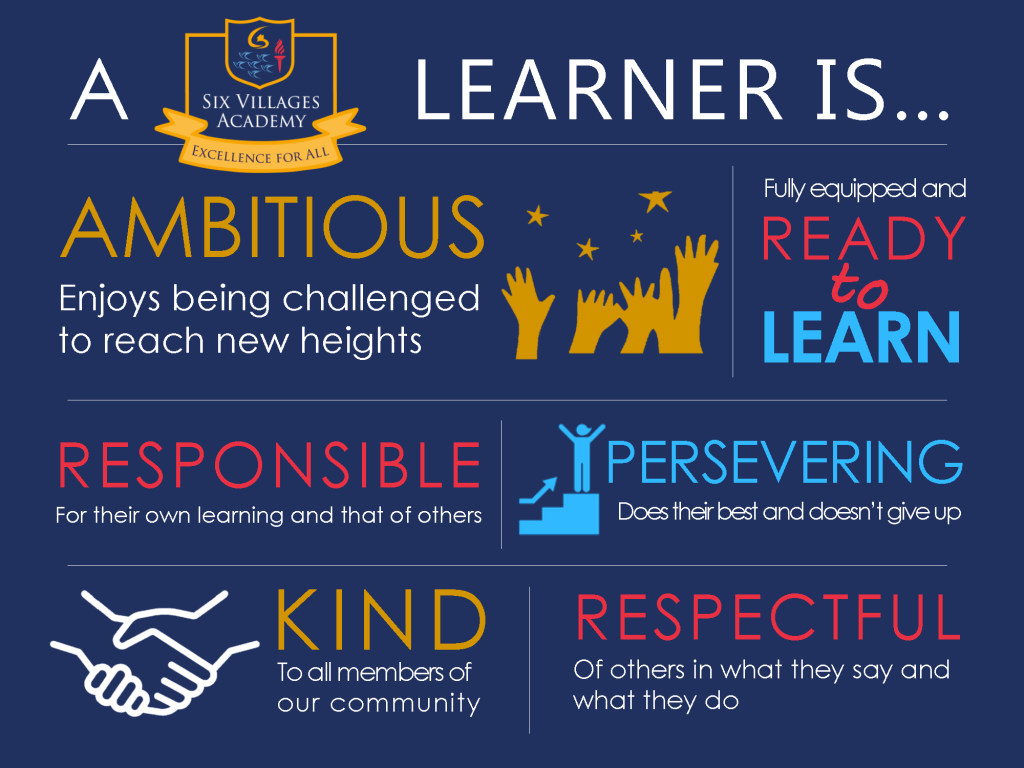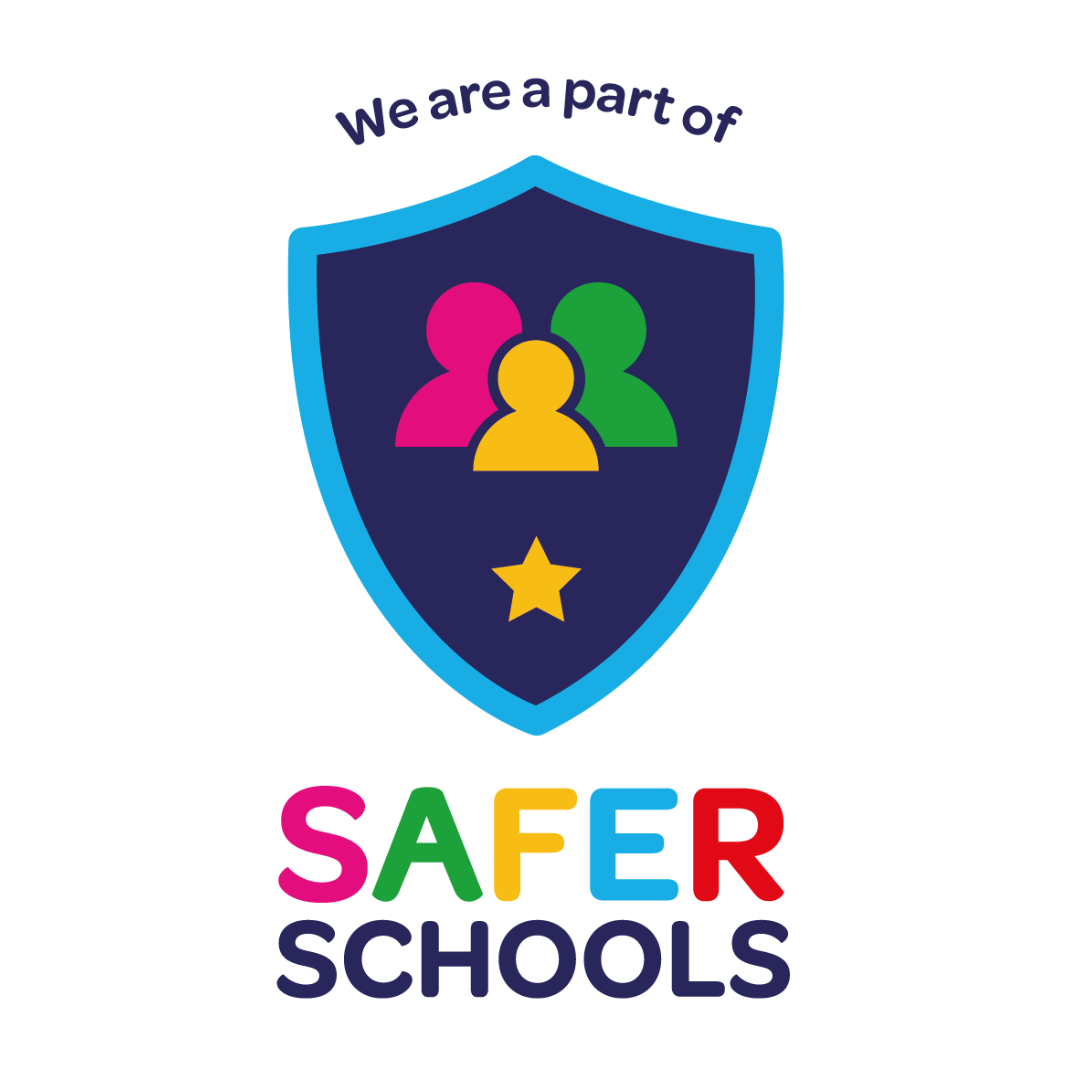Teaching and Learning
All students are taught well, through well planned, adaptive, and highly engaging lessons. Lessons are delivered through the use of common pedagogy to ensure that all students experience a consistent and predictable learning environment. Students of all abilities are challenged to think hard and engage in the curriculum. Where students need additional support, lessons are adapted to ensure engagement remains high. Lessons are designed and sequenced to compliment the broad and ambitious curriculum that is in place.
Six Villages Values and Learning Habits
- All lessons are underpinned by our core values; responsibility, ambition, respect, perseverance, kindness and community. Additionally, we also promote positive learning habits in the classroom; we prepare for our learning, we present our work with pride, we learn from our mistakes, we speak with confidence, and we do our best.
Noise Volume
- During the lesson the classroom teacher will use specific language to indicate the level of noise expected from the students (no voice = silent independent work, library voice = quiet work in pairs, discussion voice = conversational, presentation voice = clear and articulate presentation).
Seating Plans
- Every teacher will have a bespoke seating plan for their class. This seating plan is designed to ensure the most consistent and predictable learning environment for the students.
Securing Attention
- All teachers use a common language for securing the attention of the students. Teachers use ‘3,2,1, hands free, posture, eyes on me, no-voice’.
Mini White Boards (MWBs)
- MWBs are used as a key teaching tool in the classroom. Students are challenged to record their understanding of a topic/idea/question (usually through a timed activity) and then present to the rest of the class in a consistent and uniform way; teachers invite students to show their responses by ‘MWBs to chest, 3,2,1, show’.
Vocabulary
- Students are explicitly taught key disciplinary vocabulary within their learning through our ‘say it, write it, test it approach’. Securing knowledge of key vocabulary underpins positive engagement and progress in all subject areas.
Sequencing and Variation of Task
- Tasks are chunked, sequenced, and then progressed to ensure that key knowledge and skills are developed appropriately. Lessons are designed to ensure that students remember more and apply new skills and knowledge to the ever-changing world around them.
Adaptation
- Lessons are adapted to ensure that all learners can engage with the content provided. Lessons are adapted using our six key principles of good practice; pre-teach specific vocabulary, provide the reading materials and keywords on the desk, scaffold the writing with sentence starters, chunk the lesson, repeat instructions, check back in regularly with students.
Modelling
- Teachers will model to students using the ‘I do, we do, you do’ strategy. By modelling what we expect and then co-constructing a response, we give all students the best possible opportunity to succeed in the lesson. Live modelling will often use the interactive promethean board or a visualiser.
Positive Meet and Greet
- Students are warmly met and greeted at the door by their teacher, uniform is checked and amended if necessary.
Do Now and Register
- Every lesson will start with the ‘do now’ a series of starter questions that challenge students to recall and retrieve prior learning. The do now is always completed in no-voice on mini white boards. During the ‘do now’ the register will be taken. Following the ‘do now’ students will share their answers, and the teacher will swiftly address any misconceptions.
Wheel of Fortune
- Students finish the lesson positively with teachers proactively celebrating positive contributions to learning. Students who have gone above and beyond in the lesson are recognised through the Wheel of Fortune (awarding of additional points).
Positive End and Send
- At the end of each lesson students will stand behind their desk, the teacher will secure attention and then dismiss the class table by table. On exit, the teacher will positively thank the students for their contribution to the class.










